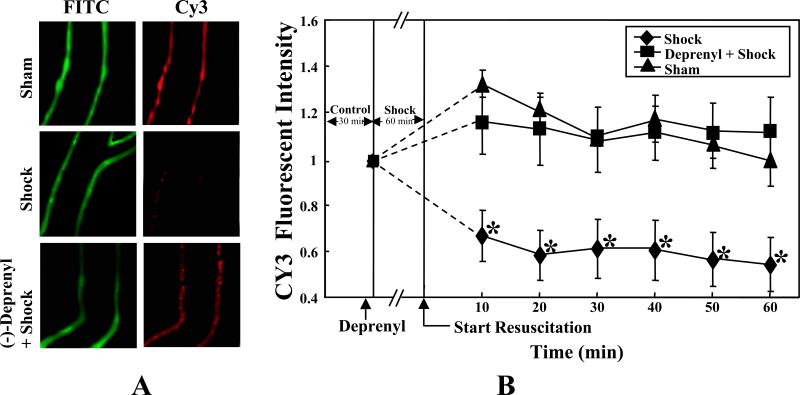Figure 3.
A. (-)-Deprenyl prevents hemorrhagic shock induced decrease in mitochondrial transmembrane potential. In sham-control, the JC-1 fluoresced the mitochondria red (Cy3 filter) and the cytoplasm green (FITC filter), indicating intact mitochondria. Hemorrhagic shock for 1 hour followed by 60 minutes of resuscitation (Shock T60) induced the collapse of membrane potential allowing diffusion of the red fluorescence into the cytoplasm. (-)-Deprenyl treatment 10 minutes prior to hemorrhagic shock prevents the decrease in membrane potential evidenced by the presence of bright red fluorescence. B. Data represents the change in red fluorescence observed using a Cy3 filter. Hemorrhagic shock for 1 hour followed by 60 minutes of resuscitation (Shock T60) induced the collapse of membrane potential allowing diffusion of the red (Cy3 filter) fluorescence into the cytoplasm. (-)-Deprenyl treatment 10 minutes prior to hemorrhagic shock prevents the decrease in membrane potential compared to the shock group *(p < 0.05; n = 5).

